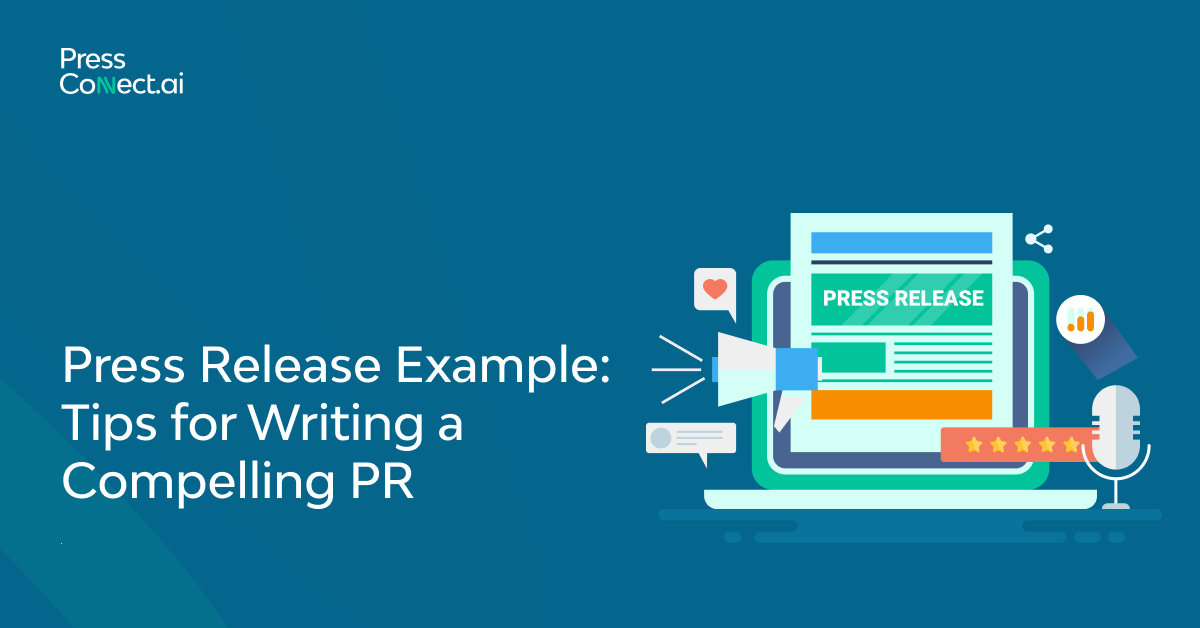PR Content Writing That Converts: Top Strategies for SEO and Media Impact
The key difference between prominent press releases and those that fade into obscurity lies in their writing techniques. The entire question is revealed through the writing method employed.
Writing a press release requires more than simply assembling words into a document in the standard fashion. The strategic narrative structure helps your brand share its story effectively with journalists through search-engine-friendly communication. Modern digital conditions require press releases and PR articles to fulfill two essential functions: attracting attention through email and achieving high Google rankings.
Businesses that treat their press releases as corporate memos are missing out on the significant potential benefits these documents offer. Speaking effectively through PR combines SEO methodology with newsworthy narratives, transforming static press announcements into tools for improved exposure, brand trust, and customer acquisition.
The following guide offers tested methods for creating PR articles that serve both informational and performance purposes. This guide provides the steps to create PR content that attracts both media representatives and search engine results, while also generating audience click-throughs.
PR Content Writing (And Why It Matters)
PR content writing is the art of creating written content to establish a connection between a brand and the public through a media channel. Unlike typical standard marketing copy found on blog posts, which is often overly promotional, PR content must be newsworthy, credible, and valuable to both journalists and readers.
However, in the digital world we now live in, good writing isn’t the answer. This also applies to your press release, byline, or media pitch: you need to ensure it’s SEO-optimized so it can be easily found on Google, is easily shareable across social platforms, and is relevant to industry-specific audiences.
Key differences between PR content and traditional marketing copy:
- Tone & Structure: Use a more journalistic tone in PR writing, such as informative and objective, in addition to being concise.
- Purpose: The purpose of PR content is to inform and gain media coverage, not simply to sell.
- Audience: that is written for editors, journalists, bloggers, and influencers – people who have the taste to amplify your story.
Thanks to the way PR content writing is supposed to work, however, it does more than make headlines when done properly. Not only does it build authority, but it also attracts organic traffic and establishes you as a brand leader in the industry.
It’s because of this that today, no PR marketer or PR professional can afford to be oblivious to the basics of PR content writing – the stingiest PR content writing details are absolutely crucial for the PR marketing of today. Yet, not long ago, good PR marketing could be led with photos alone.
The Building Blocks of High-Converting PR Content
However, just like all writing, well-written PR content that converts —i.e., leads to media coverage, web traffic, and brand credibility — requires more than clean grammar and a few catchy phrases. It’s about the strategic structure, the persuasive clarity, and the intelligent optimization.
For now, let’s break down the essentials of everything good PR content writing should consist of, and how it must be done for the press, as well as search engines.
Strong, SEO-Friendly Headlines
Your headline is the top (and sometimes only) opportunity to grab the journalist or rank in search.
Best practices:
- Keep it concise (under 70 characters)
- Start with something new, timely, or unique.
- Now, insert an appropriate primary keyword, such as “Launches,” “Announces,” or “Expands,” etc.
- Include your brand name, event name, or product naturally in the phrase as SEO terms.
Example:
Tech Startup Launches AI-Powered PR Tool for Real-Time Media Targeting
Compelling Lead Paragraphs (The 5Ws + Hook)
The opening paragraph will quickly answer the 5Ws (Who, What, When, Where, Why)—but is also quick to explain why this matters.
Tips:
- The book/product/event name and the release date should be included.
- Include a short, attention-grabbing stat or hook that piques the user’s interest slightly.
- It also notes how this aligns with a broader industry trend or public interest.
Clear Messaging That Aligns With Your PR Strategy
A solid press release or PR article adheres to the body of the message, which should tell a cohesive, strategic story that aligns with your overall PR goals, such as enhancing brand visibility, establishing expert positioning, or promoting a product.
How to do it:
- One core message or theme should be the main focus.
- Avoid jargon and excessive brand-speak
- Include relevant data, places for quotes or proof points
Strong Call to Action (CTA)
Guiding the next step is even essential in PR writing.
CTA examples:
- Contact… ‘To request a media kit or interview’
- “Visit [website] to learn more.”
- “Download the full report here.”
It should also not feel icky and salesy to either a journalist or a reader, and should make it easy to take action.
Linking all these elements together means that your PR content is no longer merely news. Still, it is rather a traction driver, driving visibility, media interest, and SEO value using just one well-structured piece.
Tailoring PR Content for Media Impact
The best SEO structure serves no purpose when media outlets do not find your release interesting enough. PR goals succeed only when your content stands out from other press material while offering clear news value to the media team.
Your press release needs to demonstrate editorial value and adhere to clear reporting standards while presenting valid facts to succeed in media distribution. Here’s how:
Understand What Journalists Look For
Journalists target newsworthy content that serves their audience rather than promoting business brands. The secret? Rephrase your announcement to align with current important topics or popular subjects.
What grabs media attention:
- Timeliness (is it relevant now?)
- It stands alone from all other comparable stories.
- Data or research-backed claims
- Media outlets use statements from known and skilled professionals.
- Ties to cultural, economic, or social relevance
Pro Tip: Avoid fluff. Every sentence should offer value.
Use Strong, Strategic Quotes
Journalists typically take direct quotes from sources to insert into their reports. Keep your written responses flowing naturally between words.
Effective quote tips:
- Keep them short and soundbite-worthy
- Speak naturally without using businesslike terms.
- Share meaningful professional opinions rather than expressions of simple enthusiasm because excitement by itself lacks news value.
Example:
Our spokesperson explains that this project is about upgrading small business press interaction methods, as per our Brand’s founder.
Add Multimedia to Boost Coverage Odds
The media wants ready-to-use images to make their job easier and will respond better to your pitch results. Companies should prepare professional downloadable visual materials, particularly for web-based publications.
What to include:
- Professional headshots of founders or authors
- Product images, infographics, or event photos
- Company logo (transparent PNG)
- Short demo videos or trailers (for books, tech, or products)
Match Format Expectations
The habit of professional journalists is to review content efficiently. A release without a basic structure will attract no attention even if it contains valuable content.
Format checklist:
- Create a concise release composed of 500-700 words maximum.
- Start with essential information at the beginning of your writing
- End your release with both your contact details and the boilerplate text clearly stated.
- Understand that media outlets tend to avoid using excessive visual effects in their content.
When your PR content presents a complete story package with a current engaging hook, valid sources, plus engaging media, the media can accept it more easily. This represents the area where you can effectively showcase your credentials to reporters.
Common PR Writing Mistakes to Avoid
Many brands hamper their press releases even though they use proper tools and have good intentions. Minor errors can play a critical role in securing media attention or remaining unseen by the press.
To make PR content writing effective, avoid these typical errors.
Sounding Too Promotional
Your press release should not directly promote sales. When journalists see excessive use of adjectives and empty product promotions, they dismiss your message.
Instead:
Focus on what’s newsworthy. Present proven statistics and external resources to bolster your main points.
Burying the Lead
The crucial information for your release should be presented at the beginning. Editors review documents by checking the opening information before proceeding further.
Solution:
Begin with direct information about who took what action at what time and location, and for what reason.
Ignoring Formatting and Readability
When content looks untidy on the page and lacks structure, people tend to lose interest in even compelling material.
Fix it by:
- Using short paragraphs (2–3 sentences max)
- Breaking sections with subheadings
- Bullet-pointing key facts or features
Forgetting the Audience
A mismatch between your message and the editorial aims of a publication or journalist makes your content harder for the target audience to remember.
Tip:
Tailor your press release to the media outlet’s audience, focusing on the needs of the target audience rather than your business customers. Relevance drives results.
Missing a Call to Action (CTA)
Failing to include direct actions at the end of a news release reduces its effectiveness.
You’ve hooked the media—now what? When you omit a call to action, readers will become interested yet unsure how to proceed.
Don’t forget to:
- Invite readers to take their next action (download the guide, request an interview, access the website)
- Include accurate contact information.
- Include a web link that leads readers to your media materials or website landing page.
From Pressed to Published—The Smart Way Forward
A press release serves more purposes than delivering news, as it becomes an essential asset to boost media visibility and online presence while making your brand more authoritative. A well-prepared PR content requires specialized sharing methods to reach its intended audience during the optimal time period.
The Press Connect offers its users a primary solution. Our services extend beyond distributing PR content, as we help you achieve greater visibility. Our team optimizes your press releases for search engines and then sends them to high-quality media outlets, and email recipients appear in the listings.
Our service helps you reach your target audience through credible press platforms when revealing products, partner deals, or thought leadership content.






